AARONG MILK A Social Statement by itself
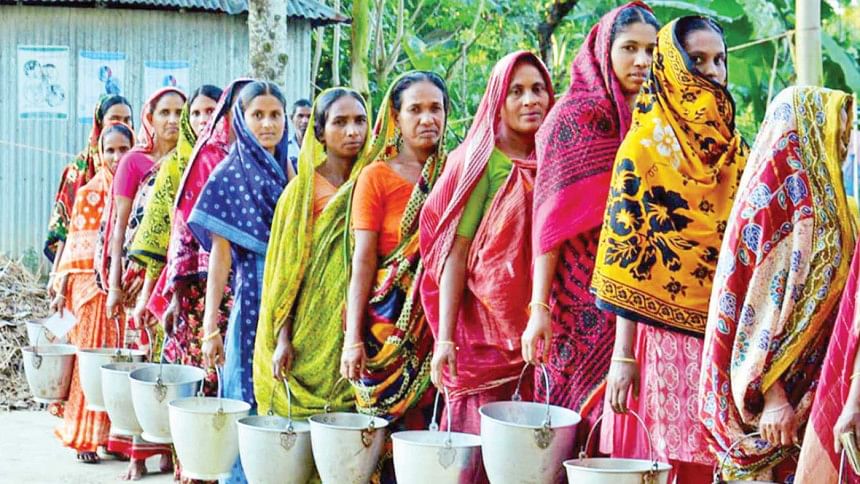
Sabina must have realised very early on during her childhood that her life was going to be no walk in the park. Born unto a world of poverty, Sabina hardly ever had a childhood to begin with.
Dropping out of school at Grade-7, she found herself married off at only 14 years of age. Two kids later, Sabina and her day-labourer husband reached a point where they literally did not have enough money to survive.
As the closest milk collection point was far away from the community, it was tough for the producers to sell their milk and get a fair price. Sabina offered her help in this regard and since then, she has not looked back.
Sabina began with collecting and selling 10-15 litres of milk and has now gone on to selling 45-50 litres of milk per day. Along with this, she has also started a small cattle feed business to augment her income.
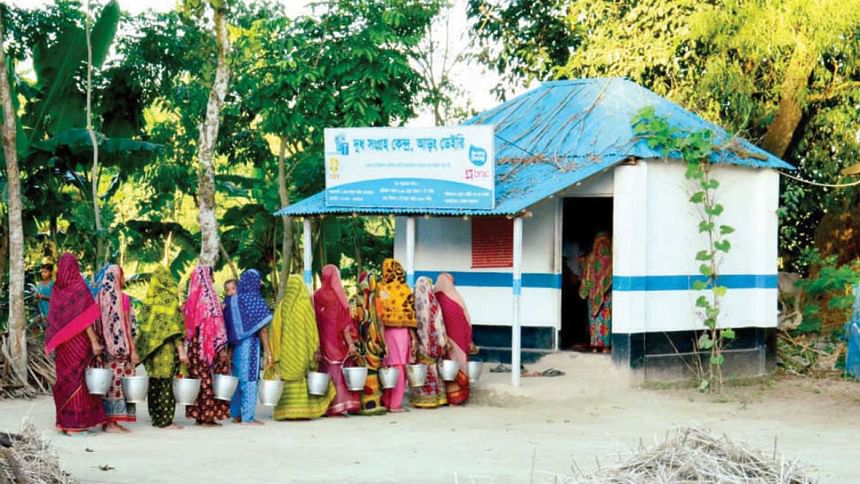
With a little help, Sabina climbed out of the unforgiving grip of poverty and now she uses her income to meet day to day expenditures along with planning a better future for her children.
Like Sabina, many others have benefitted from an industry that once faced many challenges. Previously, the dairy industry suffered greatly from a lack of established linkage between production, distribution and consumption.
Dairy farmers were not receiving fare prices and the breeds of cow in their farms would produce low quantities of milk. Then in 1998, BRAC Dairy was established to help dairy farmers overcome these problems.
What started as a social business soon became a brand, Aarong Dairy, to be reckoned with, one which soon gained the trust and respect that few business manage to gather. However, Aarong Dairy's reputation wasn't based just on the quality of their product but also the story present in every packet. For buying Aarong Dairy is akin to directly supporting a community, which is in need of our support. Aarong Dairy then, is a social statement all by itself.
During its infancy, Aarong Dairy found that though there were plenty of locals involved in the milk trade, they could not find a permanent market. In fact, at times they found that there was hardly any demand or the demand was too erratic to be profitable for them. Low quantities of milk produced by their cows also meant that milk production was an expensive process. Poor breeding, limited veterinary services and shortages in cow feed were some of the other challenges face by dairy farmers.
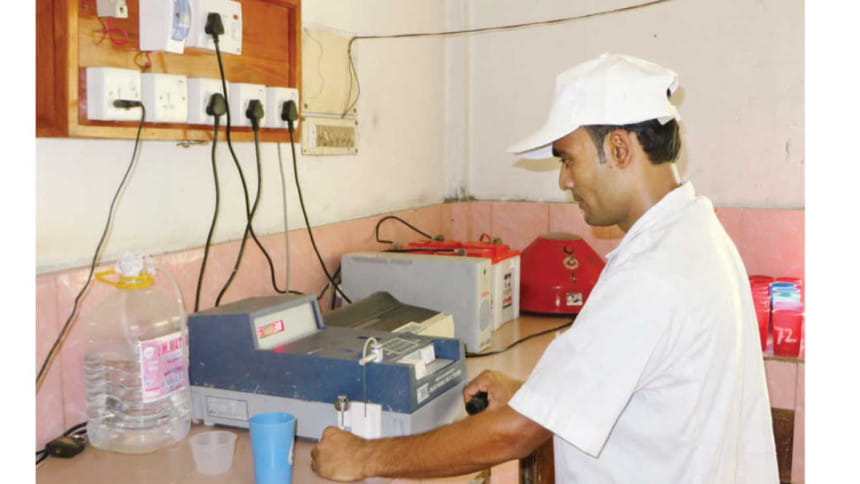
Aarong Dairy identified the problems in the sectors and then began to find ways to rectify them. The first order of business was to establish both forward and backward linkages in terms of milk production.
In fact, although Aarong Dairy itself was established in 1998, its origins can be traced much further back, in the early 1980's, when the BRAC micro finance program aimed to provide funds for ultra-poor farmers to procure cows and invest in cows. Subsequently, BRAC's artificial insemination program also came into play, and successfully helped farmers rear breeds of cows that significantly increased their milk yields.
Having helped increase production of milk, BRAC now needed to ensure market access for its farmers at a fair price. This is where Aarong Dairy fits in.
The organisation began buying the milk that the farmers could produce at very competitive prices. Because of Aarong Dairy's presence, the local farmers could finally have guaranteed payments based on their individual level and quality of production. This was a huge incentive.
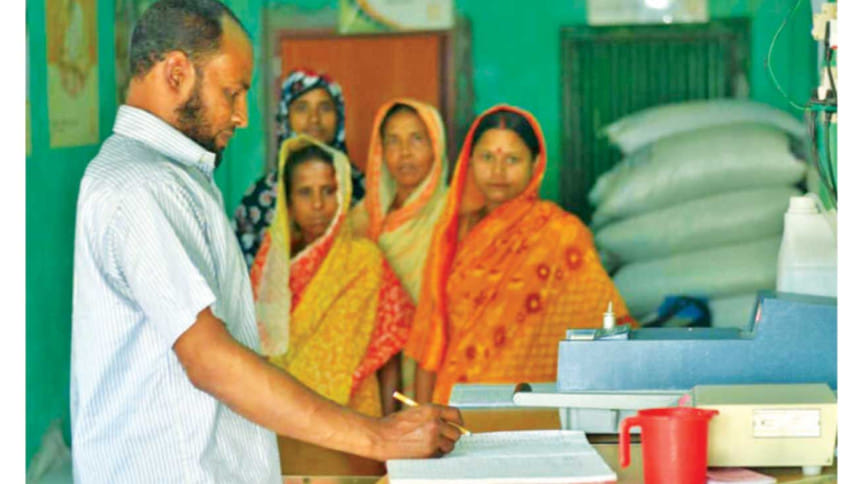
Aarong Dairy thus removed the major headaches for the farmers such as where to store to the milk and how to transport the milk. Aarong Dairy has gone on to set up 101 chilling plants, with 10 plants set up in the Northern region, where milk production is low due to unfavourable climactic conditions. However, Aarong Dairy had no plans to leave any farmer behind, so the Northern region was included despite the problems.
Furthermore, it was not just the milk producers who benefitted. As Sabina's story shows, milk collectors were even benefitted and so were those who were involved in the production of cattle feed.
Along with milk producers, peripheral industries and ancillary services also were advantaged greatly. Entire villages could be seen transforming, freeing themselves from the shackles of poverty.
However, bringing in milk from all corners of the country, did throw up a dilemma of its own. Milk from each region is unique in its qualities and even taste. To ensure uniformity in all their milk products, Aarong Dairy instituted a three-step test. These tests help to establish the homogeneity of the products, so all the products are the same. The powder milk that Aarong Milk produces is also entirely locally sourced.
Currently, Aarong Dairy has 101 collection and chilling stations located in 25 districts, including 10 located in ultra-poor areas. The enterprise collects 102,559 litres milk daily and serves 50,000 farmers, 64 percent being women. More than 2 packets of Aarong milk are produced every 2 seconds.
Aarong Dairy, has come quite far in a short span of time given their ambitions. They have carved a niche for themselves not only for consumers but also for the producers. In fact, Aarong Dairy is a social enterprise. The primary objective is not necessarily to become a market leader, but help create market access for our dairy farmers, and ensure a fair price for them.
Nothing in terms of quality or even ethics is compromised. Aarong Dairy isn't just a product; it's a social statement or rather a powerful business statement that helped not only to preserve but also revitalise an entire industry.
Next time you purchase a packet of Aarong Milk, remember that you are not only purchasing something with nutritional value but rather you are directly responsible for preserving and ensuring the very livelihood of over 50,000 farmers.
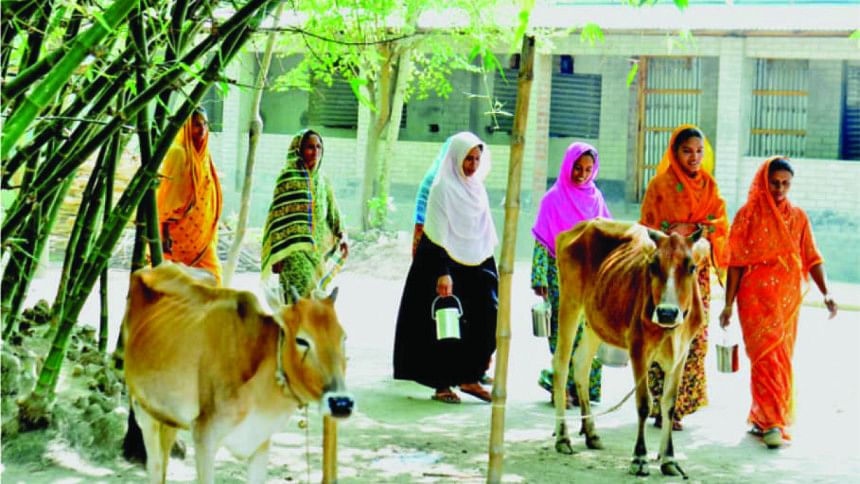
Photo Courtesy: Aarong Milk

 For all latest news, follow The Daily Star's Google News channel.
For all latest news, follow The Daily Star's Google News channel. 



Comments